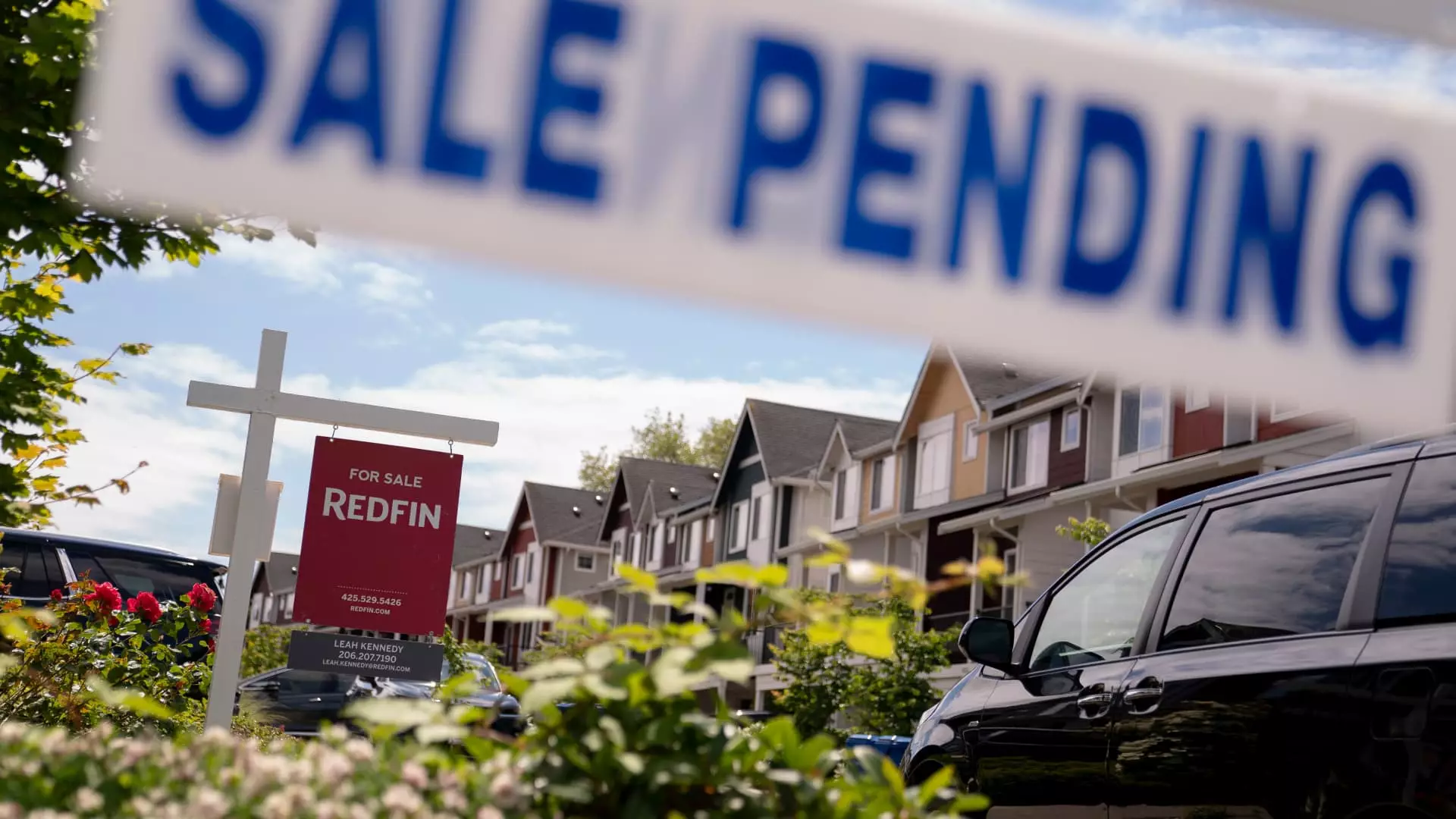The real estate market is encountering significant turbulence as mortgage rates have spiked to their highest levels since February. For many would-be homeowners, this situation isn’t just disappointing; it signals a potential crisis that threatens the aspirational dreams of countless individuals. Last week saw a staggering 8.5% decline in mortgage application volume, according to the Mortgage Bankers Association (MBA). These are not mere numbers; they represent the dreams of families looking to lay down roots. When prospective buyers are forced to scale back or abandon their plans due to steep interest rates, it creates a snowball effect that reverberates across the economy. The average contract interest rate for a 30-year fixed-rate mortgage has now reached 6.81%, compared to 6.61% just the week prior. Such rates not only curb enthusiasm but also compel buyers to seek riskier alternatives.
Shifting Buyer Behavior: A Dangerous Trend?
As mortgage rates climb, buyers are increasingly turning to adjustable-rate mortgages (ARMs), which offer lower initial rates but carry far greater long-term risks. This trend indicates a worrying lack of informed decision-making as buyers may overlook the financial pitfalls associated with these loans. A significant 9.6% of mortgage applications last week were for ARMs—the highest percentage recorded since November 2023. While one might argue that any chance to ease monthly payments is worth seizing, this could lead to long-term instability for borrowers who could find themselves facing unmanageable payments when rates adjust upward.
When viewed through a center-left lens, one must critique this trend as emblematic of larger systemic issues in our economy. The focus seems to be on immediate affordability rather than long-term sustainability, and that raises alarm bells. Mike Fratantoni, the MBA’s chief economist, pointed out that economic uncertainty and erratic rates are discouraging many buyers. The implication here is that homeownership—once considered a bedrock of the American Dream—could be slipping away from those who can least afford to take risks.
The Inventory Paradox: A Silver Lining? Or a Mirage?
Interestingly enough, despite increased demand compared to last year, the number of active listings has risen by 30% within the same timeframe. You would think this would provide a salve for anxious buyers, and yet, the reality is much more complex. Home prices continue to escalate, creating a paradox that leaves many struggling to find affordable options. Fratantoni’s observation that “low inventory was blamed for weak sales last year” captures how conditions have shifted. It’s as if the universe is handing buyers more choices while simultaneously pricing them out of the market.
This raises an unsettling question: Are we witnessing a tipping point where the ongoing rise in home prices and the dubious affordability of monthly payments might usher in a new era of economic inequality? Homeownership is no longer a universal reality; it’s increasingly becoming the privilege of a select few. If the current trend continues, will homeownership become a relic, much like pensions and job security?
Refinancing: A Complex Dilemma
Despite the unfavorable mortgage application trends, refinancing remains a beacon of hope for some homeowners. The 12% drop in refinancing applications isn’t exactly heartening, yet it’s worth noting that these applications are still 68% higher than they were last year. Is this a trend of desperation, or are homeowners attempting to claw back financial stability in an unforgiving economic landscape? Rates were up 32 basis points at this time last year, highlighting the folly in complacency.
Experts, however, warn that while there may be a momentary relief in rates as markets settle down, volatility is lurking just around the corner. As Matthew Graham of Mortgage News Daily astutely cautions, this is not the time to assume that present rates will endure. For a liberal strategist focusing on the intersections of economy and social equity, it’s evident that policy changes must be enacted to protect consumers navigating this tumultuous climate.
The Road Ahead: A Call for Thoughtful Solutions
The increase in mortgage rates is clearly not just an economic issue but an existential one that challenges the very foundation of the American Dream. As millennials and younger generations grapple with these dismal trends, we must ask ourselves: What’s the solution? It’s not merely about rate adjustments but also about making the housing market more accessible and sustainable. Without thoughtful intervention and policy changes, we may be on the brink of not only a housing crisis but an emerging chasm between the haves and the have-nots. The time for action is now, lest we drift into an era where homeownership slips even further away from reach.

Leave a Reply